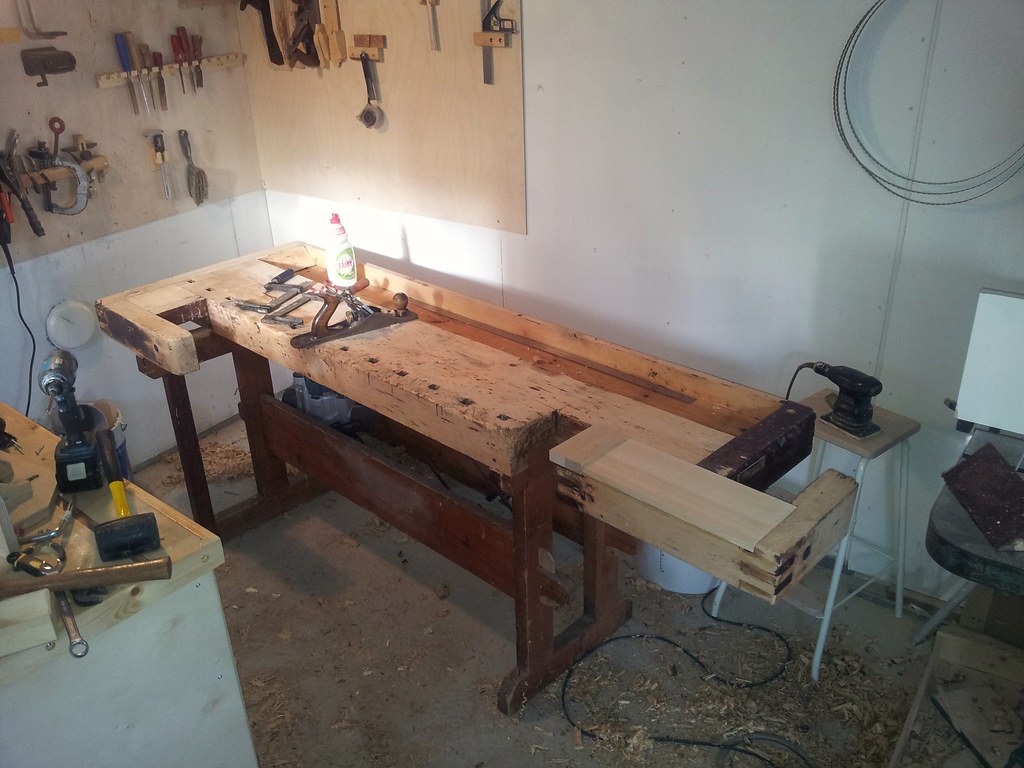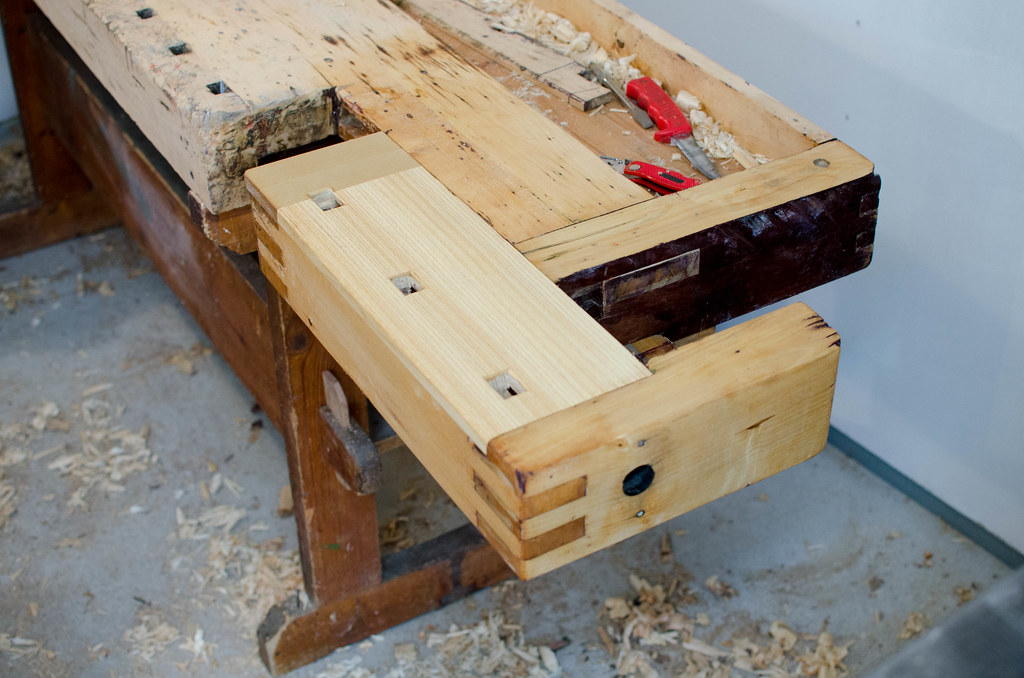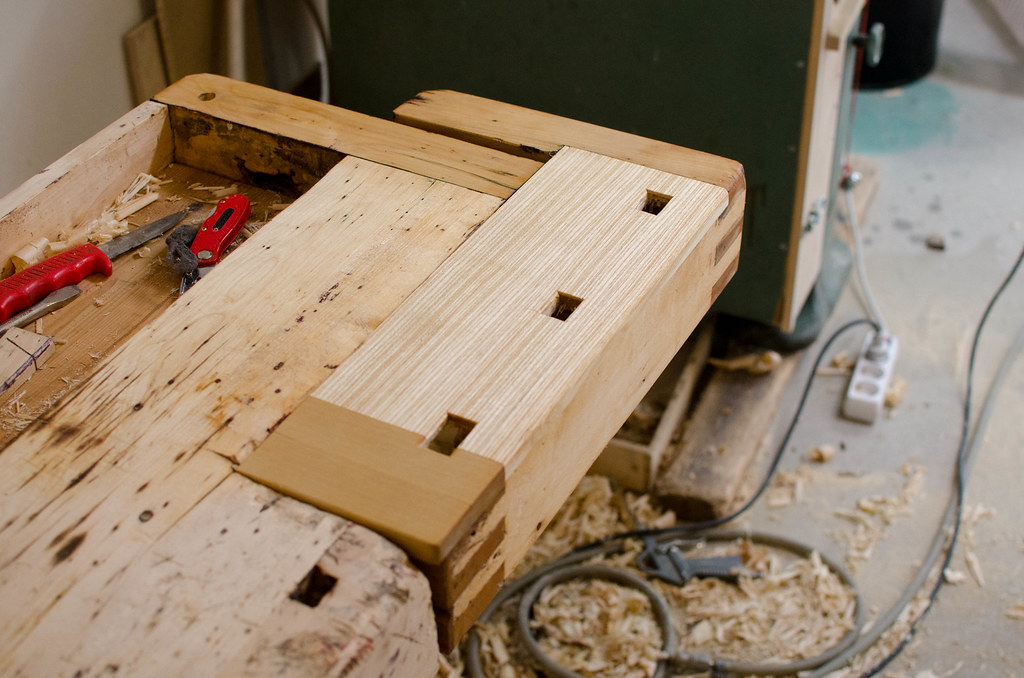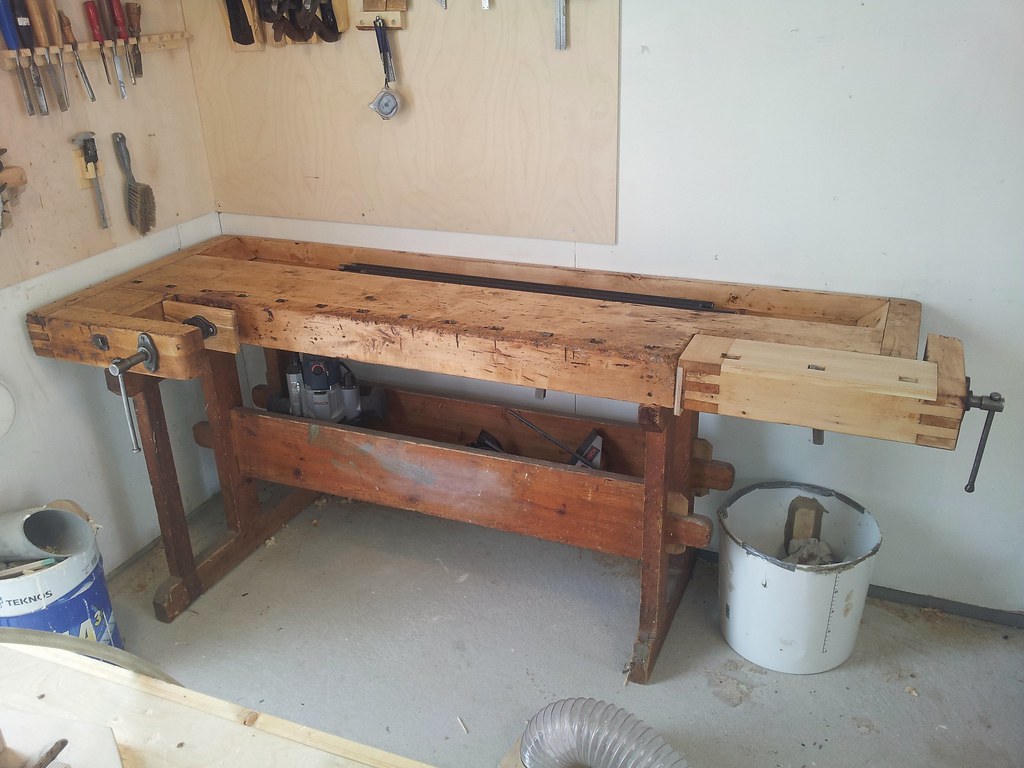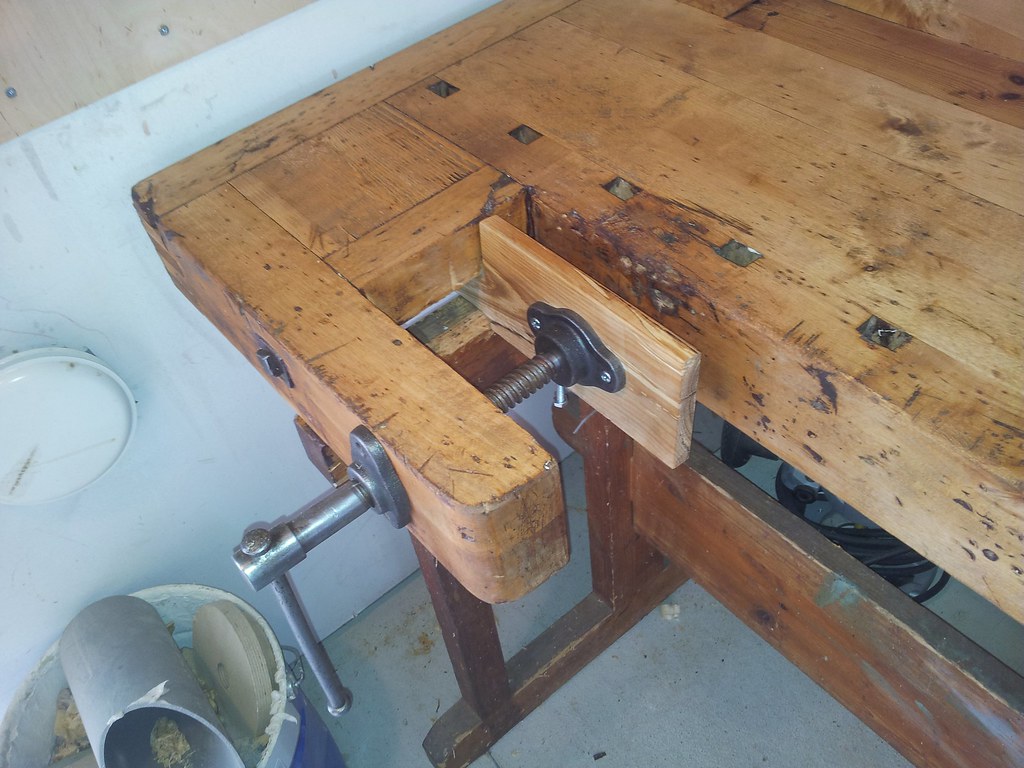Got myself an old scandinavian type woodworking bench:
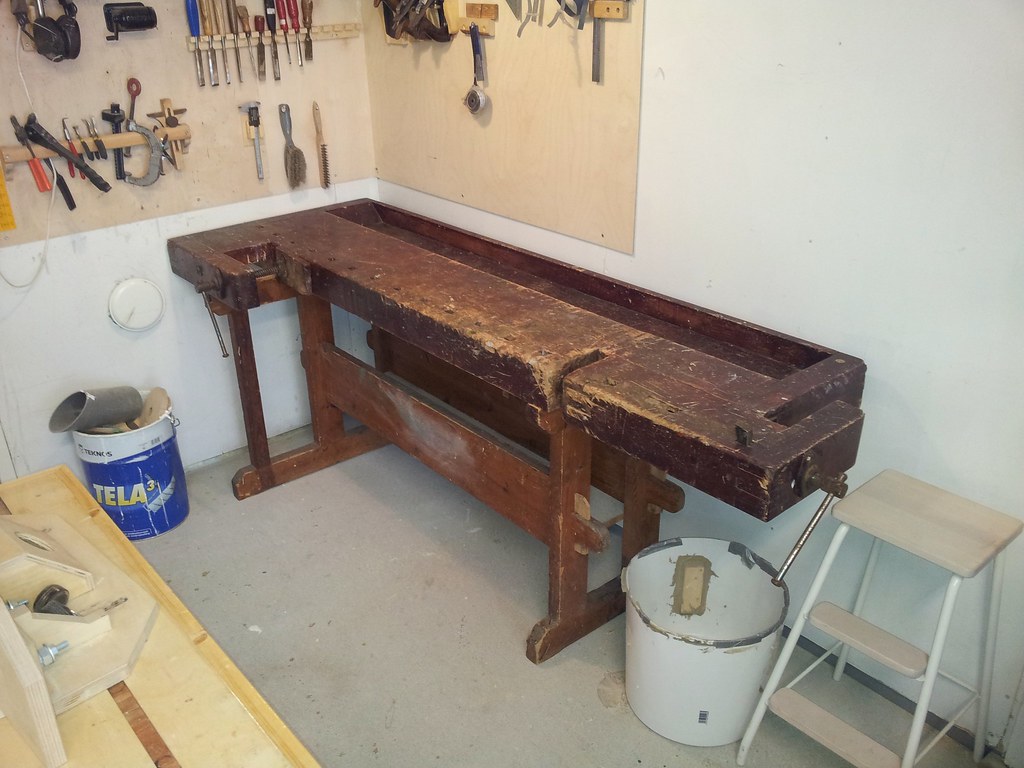
It has this dark looking (slightly translucent) paint splashed on it, I dunno what the previous owners thought but I don't like it much. Any tips on removing it?
Planing the surface will get rid of most of it but I think some kind of chemical stripper might be required to get everything from all the crevices and places that are hard to plane. Something that doesn't hurt the wood or leave it looking ugly... I would like to restore this bench as much as possible and give it a clean slate in my ownership, just some BLO for finish.
I've already taken apart the shoulder vise, the box joints keeping it together are very "gappy" and filled with crud. Taking it apart and cleaning it out and see if I can put it together without the gaps. Some parts look so worn I might need to make new parts entirely. The dog holes in the tail vise are in bad shape.

It has this dark looking (slightly translucent) paint splashed on it, I dunno what the previous owners thought but I don't like it much. Any tips on removing it?
Planing the surface will get rid of most of it but I think some kind of chemical stripper might be required to get everything from all the crevices and places that are hard to plane. Something that doesn't hurt the wood or leave it looking ugly... I would like to restore this bench as much as possible and give it a clean slate in my ownership, just some BLO for finish.
I've already taken apart the shoulder vise, the box joints keeping it together are very "gappy" and filled with crud. Taking it apart and cleaning it out and see if I can put it together without the gaps. Some parts look so worn I might need to make new parts entirely. The dog holes in the tail vise are in bad shape.





